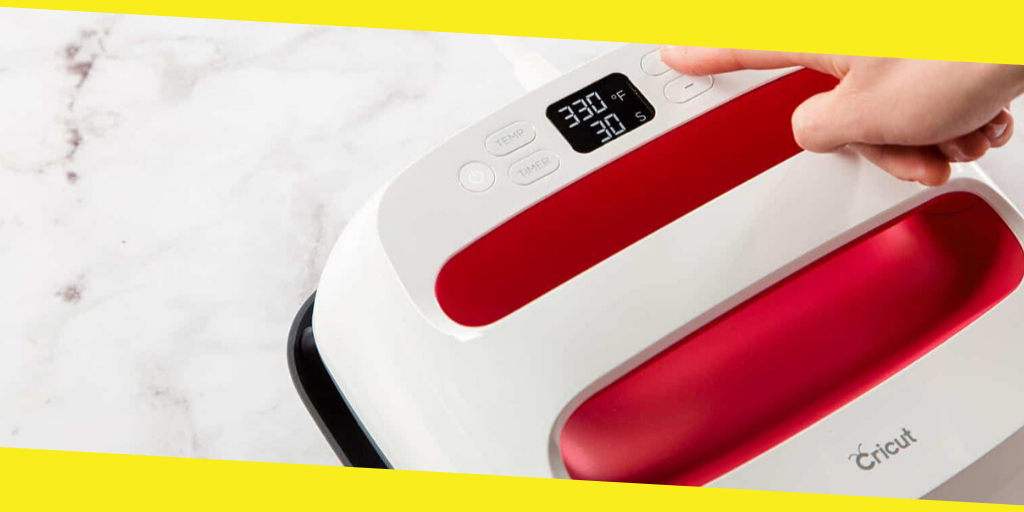Sublimation Heat Press vs Regular Heat Press: How Are They Different?

Those working in businesses that provide direct-to-garment printing are likely familiar with the terms sublimation heat press and regular heat press. For those yet to venture into this wonderful world, however, it’s important to know that despite the close similarities between these two methods, they are actually quite different.
While there’s no question that businesses wouldn’t be using these methods if they weren’t both great, each does have certain qualities and requirements that make it the better choice for users depending on their needs. Let’s find out what they are.
Regular Heat Press
Regular heat press involves the use of a heat transfer paper, which transfers designs onto garments through the application of heat via a heat press machine or, in some cases, a regular home iron.
First, you print a design onto the heat transfer paper using a laser or inkjet printer. You then place the sheet on a shirt or garment and proceed to press it using a heat press machine. After peeling the paper off, you’ll see the designs adhering perfectly onto the fabric of the shirt.
That’s basically all it takes to create a custom shirt! Easy, right?
What’s great about this garment decoration method is that it’s low-cost and super-easy to do. In fact, you can even start out by using the printer you have at home. You’ll also find that this works great on polyester and cotton fabrics and is applicable to both dark- and light-colored garments.
Sublimation Heat Press
As mentioned, the sublimation and heat press methods are quite similar. They both start out in a similar fashion: by printing a design onto a specialized paper, which, in this case, is a sublimation paper, and then pressing that sheet onto a garment.
That’s where the similarities end as the next steps show you how different these two methods actually are.
When the sublimation ink is exposed to heat, it assumes a gas form that lodges itself into the polyester garment. As it cools, the ink reverts to its solid form, embedding itself permanently onto the fabric.
This process ensures that there’s no additional layer on top of the garment, and the printed area gives you the same feel as the rest of the fabric. Furthermore, the method also gives you a design that’s extra durable and long-lasting.
Sublimation heat transfer doesn’t just work on fabric made of polyester, it also works on a dizzying array of poly-coated hard surfaces. This opens countless more doors in terms of the items you can customize—from pieces of jewelry and mugs to puzzles and lunch boxes.
Sublimation Heat Press vs Regular Heat Press
Based on the information above, you’ve likely gotten the gist of the sublimation and regular heat press methods. Now, let’s compare these two garment-decoration techniques in a few crucial areas.
1. Cost-Effectiveness
One of the least expensive methods for direct-to-garment printing is the regular heat press. You just need an inkjet or laser printer, which you’re likely to already have at home, to start out.
Plus, if you aren’t really looking to get into the business side of things, which would require an industrial heat press machine, then you’ll only need to invest around $300 on a hobbyist model.
The sublimation heat press method, on the other hand, is a bit pricier to start out. Granted, the start-up costs have been greatly reduced in recent years, you would still need to spend a little bit more than what you would on the regular heat press on certain essentials. These include sublimation paper, the right software, a sublimation printer, and samples that you can try sublimating.
2. Feel and Durability
Sublimation allows you to embed designs into fabrics in such a way that it doesn’t create an additional top layer. The printed fabric, therefore, feels the same way it did before it was subjected to the process, with the design becoming one with the fabric itself. Under regular conditions, this makes the design more durable and long-lasting.
The regular heat transfer process basically gives you the opposite effect; it transfers a design that adds a top layer that can be physically felt and is less durable than a print done through sublimation.
3. Garments You Can Customize
With regular heat transfer, you can work on both polyester and cotton fabrics with light or dark colors. Sublimation, on the other hand, limits you to just the polyester fabric and super light-colored or white materials.
Final Thoughts
Regular heat press and sublimation heat press methods are among the most wonderful ways to decorate apparel. However, the bottom line is that you must choose the method that best meets your needs.
There are some really great tips for improving your venture, according to thebestvinylcutters.com. For instance, you can opt for the regular heat transfer if you’re venturing into the clothing business and go for sublimation if you’re looking to print on materials like ceramics, tiles, or plastic.
Recommended For You
AutoBlow 2 Review – How to Choose the Best Male Sex Toy?
Most Inside
Most Inside offers high-quality recommendations and valuable updates to enhance all aspects of your life, providing premium guidance and enriching experiences.




